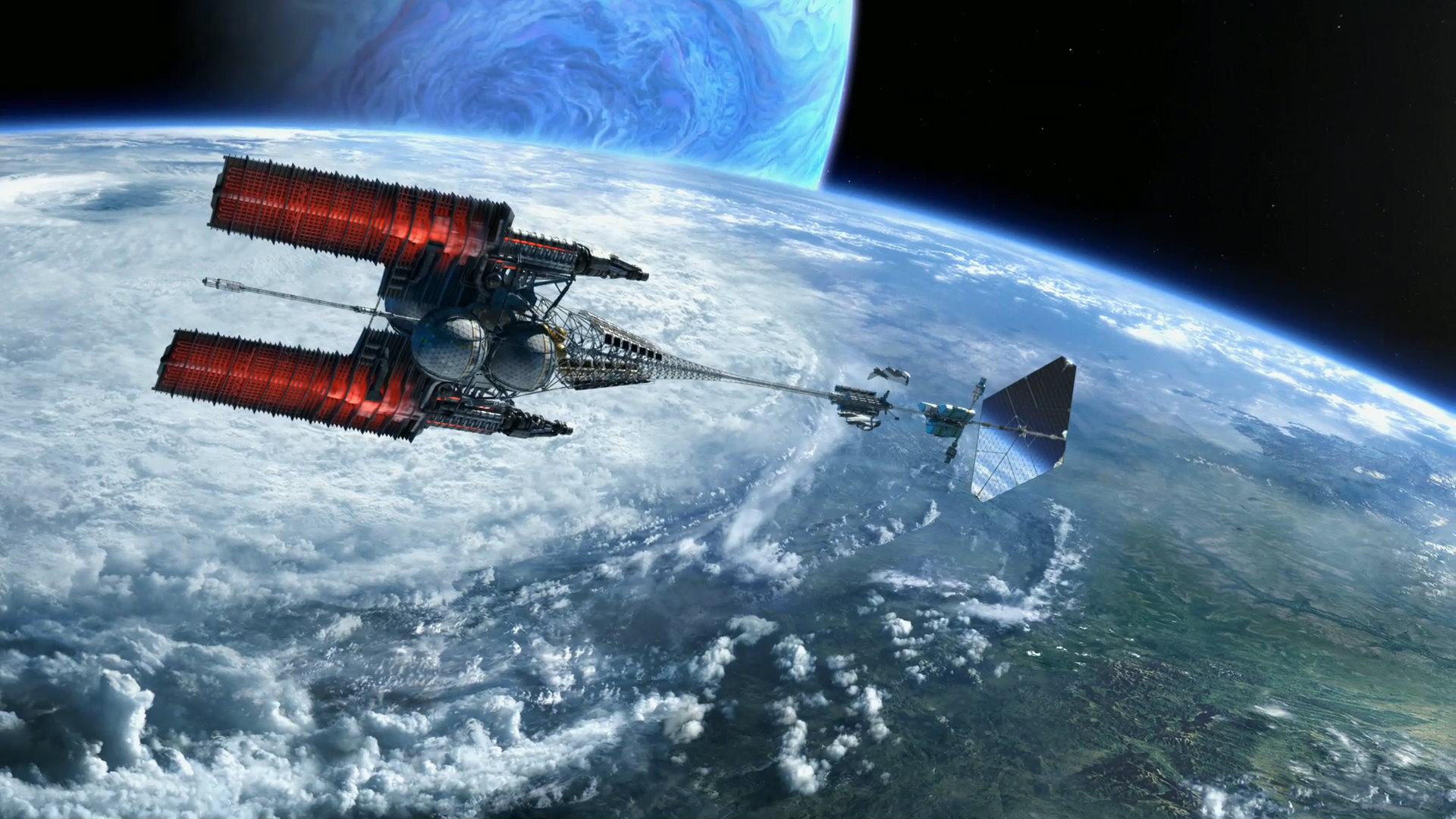Also, you need
to slow down. Yeah sure...your up to speed...but guess what, you need to now turn your ship around, and start firing the enginge to slow down at some point. You need to plot a trajectory that takes you into the orbit you want. You need to account for the fact at high enough speeds, just hitting a hydrogen atom could damage stuff. You need to account for heat. You need to account for fuel supplies.
Also, solar sails need very power lasers to be practical. After all, if your going to be bringing all that weight(and therefor that means more energy is needed to move it), you better be getting as much as possible out of it. Lasers can be used once your too far away for the Sun to provide any use. Of course, you still want a big engine in the back.
The Venture Star from Avatar is actually a very good example of a ship for interstellar travel

Those red things?
Those are radiators. The thing is, they have no where to dump heat in a vacuum. They have to store heat on board, and it has to slowly dissipate. It takes two weeks.
Those orbs are fuel containers.
That mirror is important. This thing actually uses a Sail...but not to harness the Sun. Instead, It uses to accelerate out a Massive laser thats on earth(to allow it to use convention likely to help keep cool.) This provides it a lot more power to accelerate with. The mirror is because the laser, being powerful enough to send this ship to Alpha Centauri, would incinerate the habitable areas(more the people in it, not the ship itself). It's there to reflect the light from the laser such that it doesnt kill the people on the ship. To slow down when reaching Pandora, it uses first a matter/anti-matter engine. One it slows down enough, it uses a fusion torch to go to a low Detla-v orbit, to allow the Valkyrie Shuttles to head to Hells Gate. Heading back to earth Reverses it. Fusion torch to needed speed, AM/M torch to reach a viable speed to get to earth, Giant Laser to slow down, fusion torch to insert into orbit.
The Cargo bay is where that object thats detached from the ship is. It's also the Shuttle Docking Station. Which is what said object is.
The part with two long poles, and objects at the end near the front(maybe) near the mirror is the crew areas. They rotate. This ship cant run itself without human input, so some of the people on board have to stay out of cryo. Cryo being that part just behind those.
The engines are likely on the oppiste side from the mirror.
Now, notice something. The area with people, cargo, and just anything alive
is tiny compared to the Radiators.
The propulsion section is massive. The payload is tiny. Also not that the dominating feature isnt engines. It isnt fuel...it's the radiators. The issue we will have at the start will be heat.




 ...
... and -100
and -100